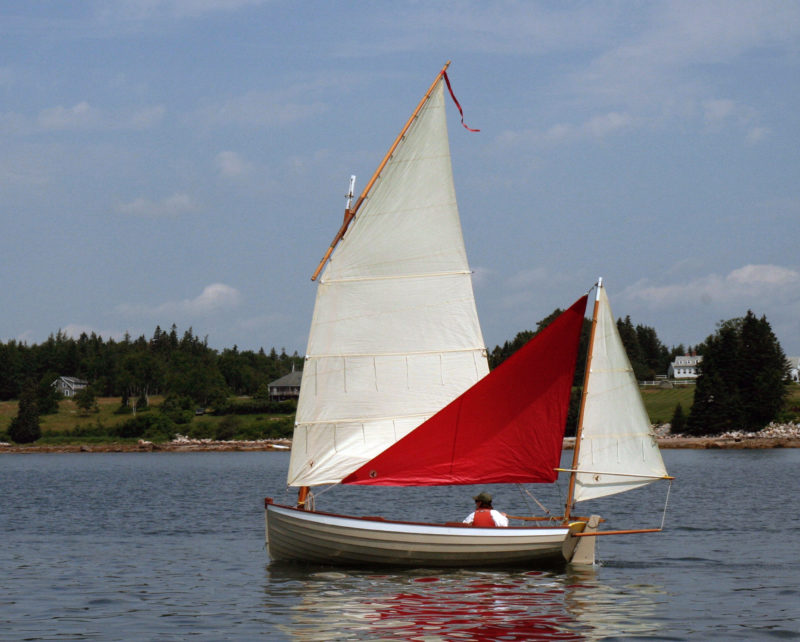 John Hartmann
John HartmannThe author’s red mizzen staysail was designed and made for WAXWING, his François Vivier-designed, lug-yawl rigged Ilur. Sailmaker Stuart Hopkins writes about this sail: “We drew a 40-sq-ft sail to be tacked on the weather rail forward and sheeted to the leeward rail aft. We cut it rather flat from 3-oz polyester (instead of nylon) ‘storm spinnaker’ cloth, in the hope it will prove useful even with the wind a little forward of the beam, and keep its shape in slightly stronger winds.”
My camp-cruising boat is rigged as a lug yawl, with a powerful and well-behaved pair of sails that is ideal for solo sailing. My cruising grounds tend to have very light morning winds during the summer months, and despite my boat’s ample sail area I have looked for ways to improve light-air performance. Enter the mizzen staysail.
I first saw one in use on the Maine coast, where Harris Bucklin and his wife Barbara were flying one in ghosting conditions on their Ian Oughtred-designed Caledonia yawl. The blue sail was not only eye catching, it was also a demonstrably effective bit of sailcloth, providing a notable gain in speed over several other Caledonia yawls sailing in company with them.
When I contacted my sailmaker, Stuart Hopkins of Dabbler Sails, he was enthusiastic and replied “I’ve had four yawl-rigged boats through the years, and every one of them had mizzen staysails—lovely, useful things.” A few weeks later I had taken delivery of the new mizzen staysail and was out on Lake Champlain in 5–7-mph winds, doing sea trials aboard WAXWING, my Vivier-designed Ilur.
The staysail is 40 sq ft of 3-oz cloth, which represents a 30percent increase in sail area over the original rig’s 133 sq ft. Deployment is straightforward. I had lashed a small block to the head of the mizzenmast, and placed a halyard cleat on the mizzen step. I already had four small horn cleats, one at each corner of the cockpit, which are normally used when setting up my boom tent for camping aboard. Once the boat settles in on a reach, I hoist the staysail by its halyard, and take the tack line forward to the cleat on the windward gunwale. The staysail sheet runs from the clew, passing through a low-friction thimble on a Dyneema loop aft that’s dropped over the leeward cleat on the aft gunwale. The staysail sheet can be secured with a small clam cleat within easy reach while I’m at the helm.
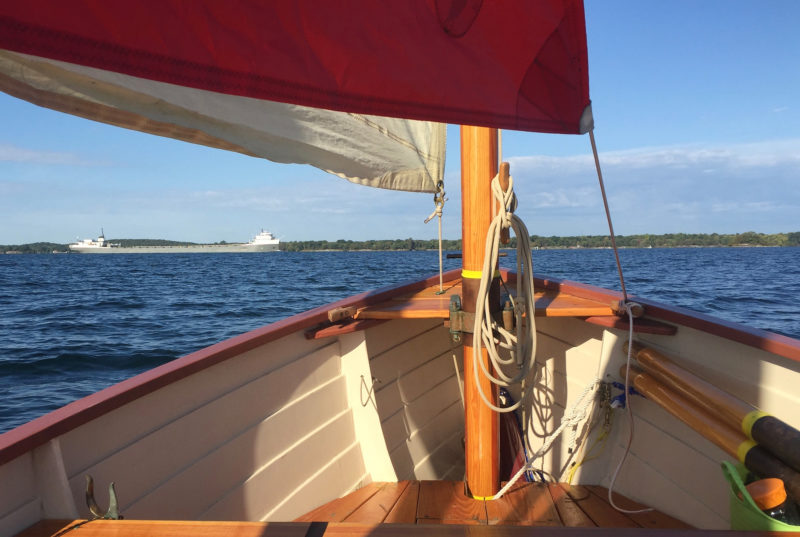 John Hartmann
John HartmannThe mizzen staysail’s tack is tethered to the windward rail, here secured to a cleat originally installed for the boat’s overnight canopy.
Over a series of trial runs with and without the staysail set, the new sail translated into a roughly 10 to 15 percent gain in speed as measured by GPS. The increased speed is noticeable even without GPS. When shooting pictures for this piece, my friend Christophe was the photographer. He sails a Sea Pearl, which has about the same sail area (136 sq ft) as my boat, but with a waterline line almost 6′ longer than the Ilur, usually leaves WAXWING well astern. I was ahead of Christophe as we started out, and I set the mizzen staysail. A few minutes later, the Sea Pearl was still well astern. Christophe hailed me: “Hey, luff up and let me catch you!” I think he might have said that to make me feel good, but the staysail was clearly making a real difference.
My staysail is a low-aspect sail, and doesn’t add noticeable heeling moment to the boat; it doesn’t affect the balance of the helm significantly either. It is a reaching sail, and in the 3-oz fabric, is stiff enough to manage sailing as far upwind as a close reach.
Tacking is easy, even singlehanded. With the boat balanced to sail hands-free, I walk forward, uncleat the tack line, and return aft. I then bundle the staysail to the mizzenmast, and come about. Once the new heading is established, I unbundle the staysail and go forward again to cleat the tack line to the new windward cleat before returning to the helm and trimming the staysail sheet.
The mizzen staysail is a beautiful, effective, and easily managed addition to a yawl or a ketch rig’s quiver. It isn’t a sail I’d deploy in close quarters or when short-tacking in confined environs, but on a longer light air reach, it is indeed a lovely, useful thing.![]()
John Hartmann lives in central Vermont. He built his Ilur dinghy, WAXWING, to sail the 1000 Islands region of the St. Lawrence River, Lake Champlain, and along the coast of Maine. He details the Pythagorean mooring system he used at Nubble beach in the Technique article in our November 2016 issue.
More on Mizzen Staysails
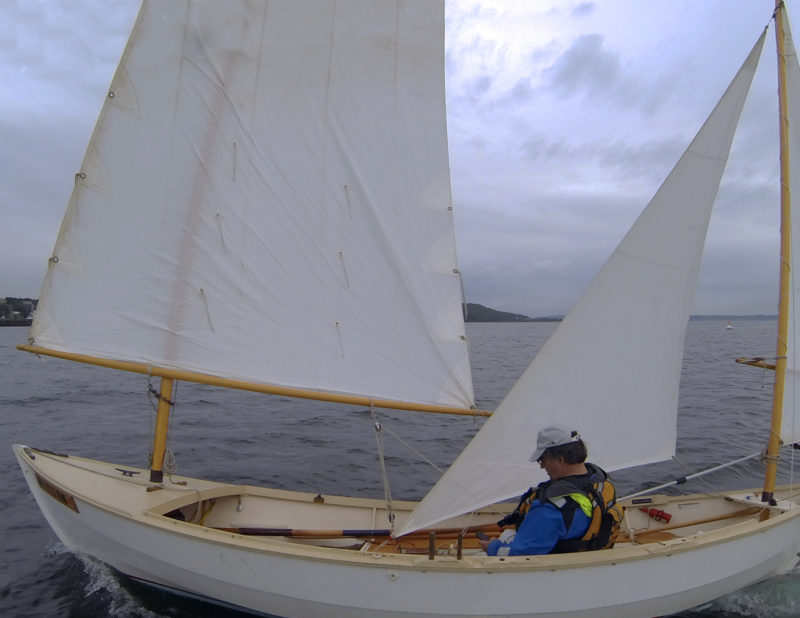 Christopher Cunningham
Christopher CunninghamThe editor’s mizzen staysail for his Caledonia Yawl was made from a jib he had salvaged. Angling the foot up for clearance was the only modification required. The jib’s cut had a bit too much luff curve for the sail’s use as a mizzen staysail and loses power when on a close reach. As Stuart Hopkins suggests above, the sail should be cut rather flat with only a slight curve in the luff.
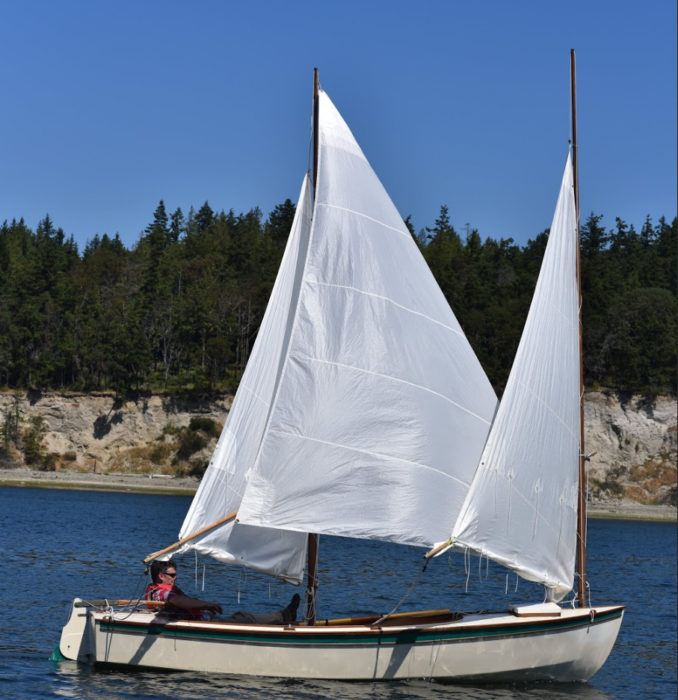 Marty Loken
Marty LokenThe cat-ketch rig of this Core Sound 17, with its tall mizzen mast, allows flying a large (85 sq ft) mizzen staysail. Drawings for this mizzen staysail call for a nearly straight 17′ luff, 6″ of round in the 12′ 8″ foot just forward of center, and 6″ of hollow in the 13′ 7″ leech just above center. Here the main and mizzen are still reefed after the wind eased and the mizzen staysail went up.
You can share your tricks of the trade with other Small Boats Monthly readers by sending us an email.

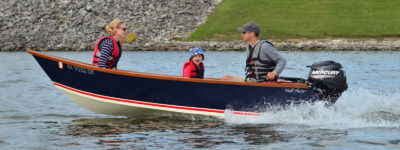
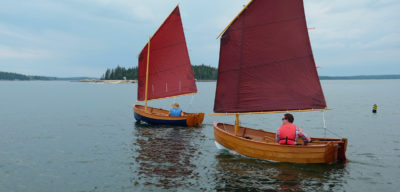

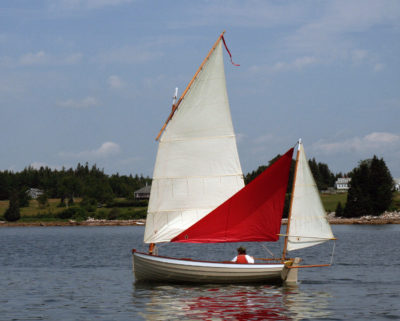

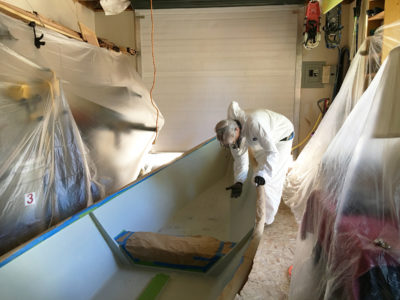
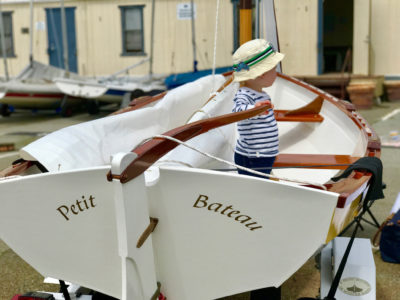
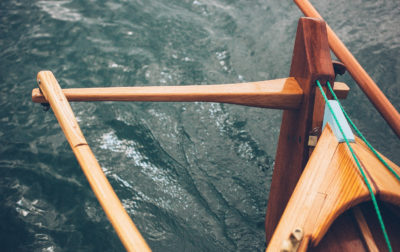

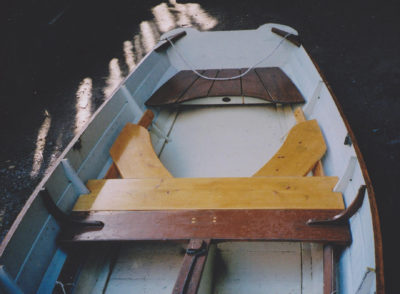
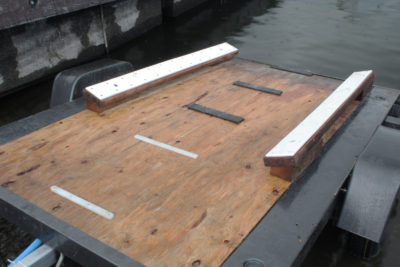
Nice write up John, you’ve given the staysail a great review for small boats. I’ll add a note: Usually a mizzen staysail main sheet is lead next to the clew of the mizzen sail—that’s in bigger boats and doesn’t seem practical on boats such as ours. I like your sail’s cut as you have better visibility under the foot. I’m a bit restricted, however, I absolutely love my sail and the extra speed or at times compensating for extra weight of gear or passengers, seems to me to make things all even against the solo sailor.
I’ll give a big shout out to Douglas Fowler, my sailmaker, who gave this some good thoughts on design and knows the Caledonia yawl’s rig as few do.
Brilliant! Just the site I have been looking for. I have recently bought a Fairlite Gull,a gaff rigged dinghy, and am just getting it organized. I shall keep an eye out for Small Boats Monthly. Cheers, Rob
I have a 16′ Falmouth Bass Boat with a ketch rig and am looking to rig a mizzen stay sail and perhaps even a flying jib. Your article is the best I have seen on the subject. Many thanks.